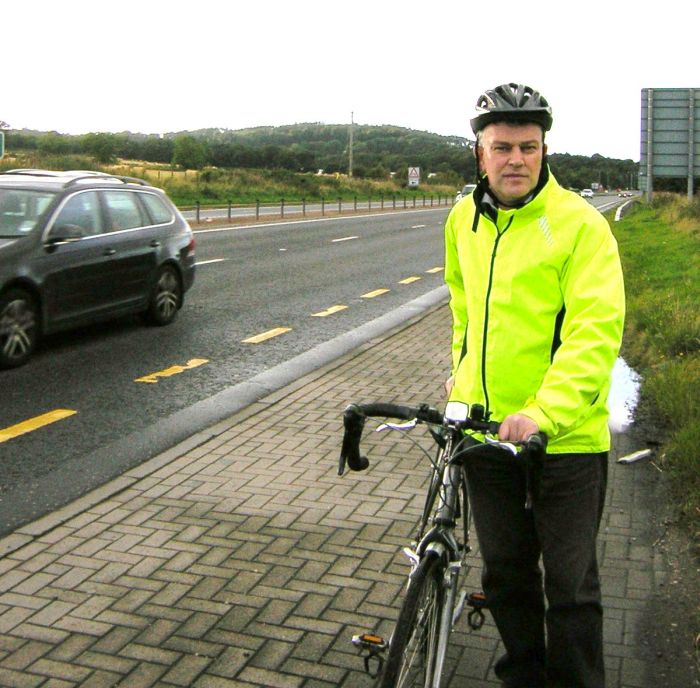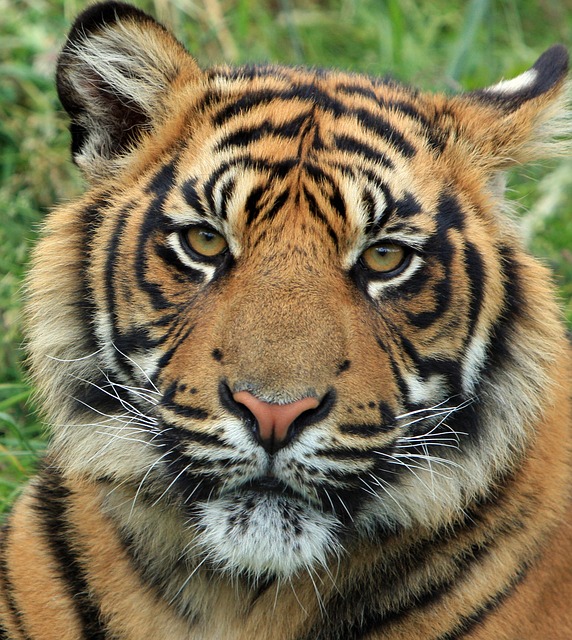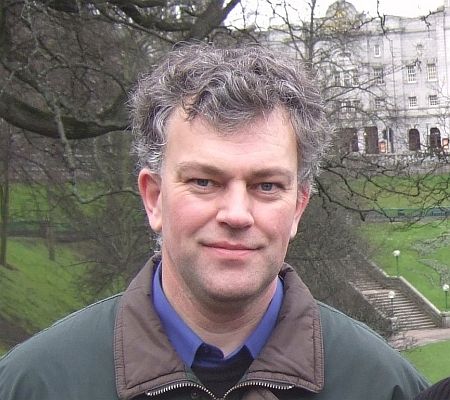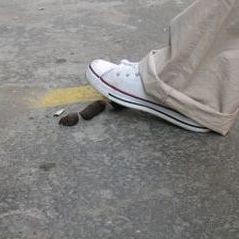The killing of mammals is unacceptable to many people and the debate took a new turn last week with the shooting of Marius after a last supper of his favourite rye bread. By Duncan Harley.
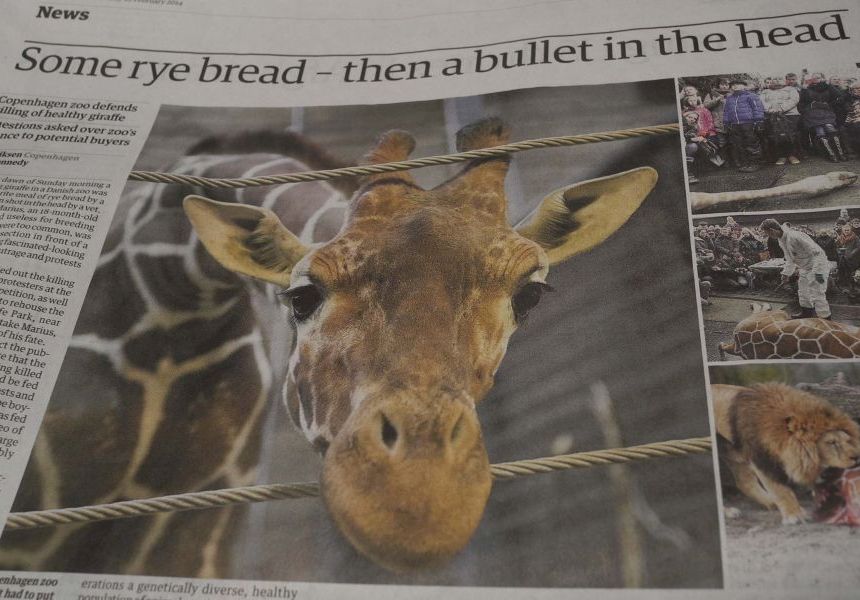 Denmark is not getting a great press these days. First there was the furore over the so called “Denmark dolphin slaughter” which filled social media with images of blood soaked seas and led to huge numbers of appalled and disgusted folk commenting on the shocking images before passing them on to others who in their turn also passed them on, often without either further investigation or question.
Denmark is not getting a great press these days. First there was the furore over the so called “Denmark dolphin slaughter” which filled social media with images of blood soaked seas and led to huge numbers of appalled and disgusted folk commenting on the shocking images before passing them on to others who in their turn also passed them on, often without either further investigation or question.
This week there is widespread indignation about the treatment of a giraffe called Marius who was shot before being fed to the lions in a Copenhagen zoo.
The story was flashed round the world via social media before being picked up by the mainstream media. Note the time frame here, social media first, then mainstream media. Citizen journalism often now leads the pack. The Arab Spring and the killing of Drummer Rigby are prime examples of the new news media.
The ultimate victim however may be truth itself as unverified news stories circle the globe.
The Guardian’s headline “Some rye bread – then a bullet in the head” was one of the more restrained mainstream Marius pieces and pointed out that the dissection of the animal following his last meal was just one of a series of such events held at the zoo. Seemingly the zoo’s programme of public dissection has in the past included snakes, zebras and goats.
Zoo scientific director Bengt Holst defended accusations of animal cruelty by saying “It is important that we explain to people why we do it.” He continued “People are fascinated by it, it helps increase the knowledge about animals.”
Calls to resign and death threats followed the director’s no doubt well intentioned comments, leading some to wonder if sanity in zoo land could ever return.
The truth of the matter may be somewhat complex however.
In the case of the so called “Denmark dolphin slaughter”, the Danes may be being unfairly vilified since the killings take place some 814 miles from the Danish capital of Copenhagen and in an automonous self governing island community situated in the Norwegian Sea midway between the UK, Iceland and Norway.
Furthermore, some sources suggest that the ‘dolphins’ in question may not actually be dolphins at all but a species of long finned pilot whale.
The hunt is known as the grindadráp and is a centuries old tradition carried out in the Faroe Islands, an island nation overwhelmingly dependent on what the sea can provide. Designed to produce a sustainable and annual harvest, the grindadráp is indeed gruesome however islanders are quick to point out that the hunt is not done for any commercial gain, with the meat being solely distributed amongst the local community.
A Faroese islander living in Aberdeen commented that the old and the poor receive most of this harvest.
“The Faroese are a very close community” she said
“we take very good care to ensure that everyone gets a share”
“Nothing is wasted, what is not used immediately is frozen for the winter season.”
With a population of just over 21,000 people the Faroe islanders claim that they rely on the sea harvest to supplement a meagre land based agricultural system. With an estimated 0.1% of the global population of pilot whales being killed each year the hunt is considered to be sustainable according to the International Union for the Conservation of Nature.
The morality of the hunt can of course be questioned, however the claims by the Faroese regarding their commitment to community and sustainability looks reasonably sound. It is a gruesome activity of course and the “Cove” like images of a blood red sea cause offence to many.
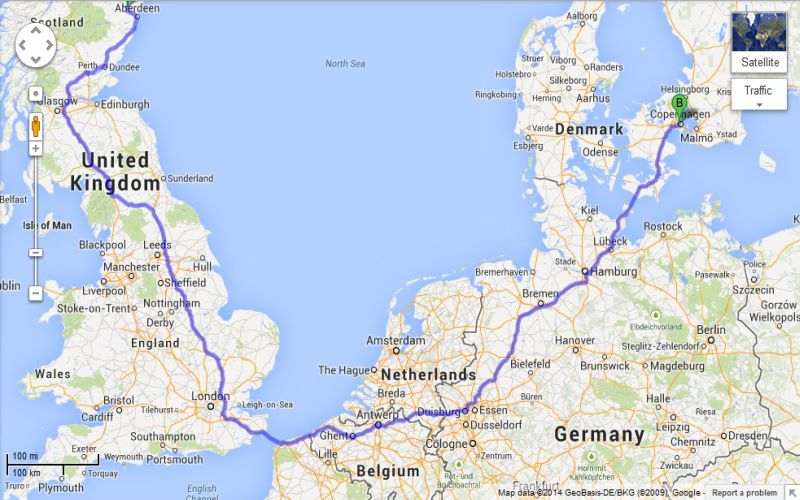
How to get to the zoo
The islanders have claimed that they have strictly enforced laws designed to prevent unnecessary suffering during what they see as an annual harvest. The grindadráp seems to them acceptable, especially when contrasted with the daily slaughter of tens of thousands of cows, pigs, sheep and chickens in the rest of Europe.
As for Marius the giraffe, biologists routinely dissect frogs, rats, sharks, and cats in comparative anatomy classes to learn about animal anatomy.
Medical students are similarly trained and when you next visit a GP it may be useful to consider the fact that his or her care of your condition may depend entirely on a good understanding of the anatomy of the human body.
However, yet again, the morality can of course be questioned and the truth of the matter may be slightly different from the mainstream media portrayal.
The Danish newspaper Berlingske Tidende wasted no time in pointing out the double standards implied in the criticism and even death threats made against the Copenhagen Zoo scientific director Bengt Holst. Pointing out that that the killing and consumption of millions of farm animals in the EEC each year went largely unchallenged amongst the meat eaters in Europe, the papers readers were quick to comment that:
“Cows, pigs and chickens live their lives in hell so that we can have cheap meat from the supermarket.”
Which roughly translated reads something like:
“Køer, grise og høns, som lever deres liv i Satans forgård i små bure og stalde med mavesår for at blive slagtet på samlebånd, så vi kan få billig kød fra supermarkedets containere.”
A Dane currently living in the UK commented that most consumers “think nothing of buying a dead chicken which has never seen light” and wonders why the press have focussed on children being able to watch the dissection.
“Surely it was their parents decision to bring them”, She said.
“We take animal welfare very seriously in Denmark and treat our farm animals very well. I don’t really see the difference between slaughtering cows and sheep for human consumption and slaughtering a giraffe for tiger consumption.”
To many, a zoo visit conjures up cosy childhood memories of cute monkeys and ever watchful meercats.
Perhaps though the reality of the local zoo being little more than a breeding establishment with an unromantic focus on scientific endeavour has come as a shock to many folk.
However, although zoo officials may not publicise the fact that the killing of animals is the price of conservation, animals including pygmy hippos, zebra and bison are regularly ‘put down’ as a consequence of breeding programmes. Poor Marius was but one victim of the human instinct to kill to protect a species.
It opens up a whole new debate really.
Perhaps we should thank the Danes for highlighting the issue.
STOP PRESS:
Jyllands Park Zoo has today (13th February 2013) announced that it too has a giraffe named Marius.
In an almost unprecedented PR disaster the Danish zoo announced:
““We can’t have two males and one female. Then there will be fights,” zoo keeper Janni Lojtved Poulsen told Danish news agency Ritzau. “If the breeding program coordinator decides that he should be put down, then that’s what we’ll do.””
- Comments enabled – see comments box below. Note, all comments will be moderated.
